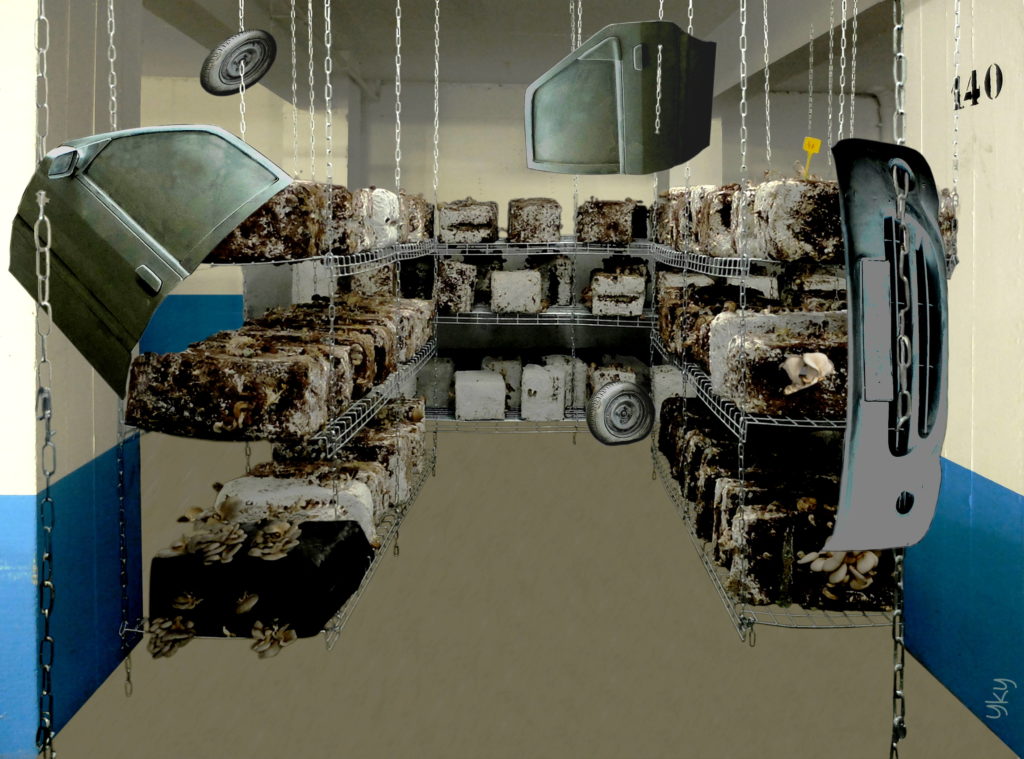The underground’s image is negatively related to darkness and discomfort. It triggers concerns and claustrophobic fears. It has been left over during centuries in favor of the top which was seen as the field for unlimited conquering quests… But all this is coming to an end. A continuously growing population on a limited surface forces us to reconsider the current paradigm. Underground seems to offer new alternatives to urbanists, but will it in the same time improve our well-being? Amongst different initiatives, one comes from the conceptual architect, D. Perrault, introducing the notion of groundscape, being the landscape of underground. Groundscape should be understood as the reverse of the surface, an extension of the top, the root system enabling the city to keep on growing without losing its continuity. Interestingly, and contrary to what most people would think, groundscape is not aimed to become the new place to live but the place where urban services could be re-allocated. The light-walk of Seoul provides a good example (1). This being said, though there is no doubt on the quality of the engineering approach, the issue of urban resilience is still pending. Would earthquakes have less consequence in a groundscape environment? Rebalancing the connections between people and services may have advantages, but so far, it is not very clear when this would profit to urban citizens. More generally, what hazards would be better managed by a groundscape compared to a landscape? Could a new spiritual dimension contribute to a master plan incorporating the underground and the sky, with buildings being just a sort of “middle zone”, as argued by D. Perrault (2), recalling the sensitivity of Gordon Matta-Clark?
Moreover, neglecting the impact of engineering works on our underground could be seriously detrimental. A survey of the British Geological Survey (3) recalls how crucial the need is for a better understanding on the way subsurface space should be managed with more than 1.5 million kilometers of underground services, water, sewer, gas, electricity, and an estimated 4 million kilometers of data lines. The “deep city project” (4), a comprehensive report on underground resources, underscores the complexity of their interactions, with possible damages on both hydro-geological balance and water quality. Underestimating such interactions could potentially be very harmful to urban resilience.
Amongst the opened questions raised by the debate on underground building, one should reach a consensus: there is no future for car parks in cities, at least in their current number and design. The trend is clear and indisputable. Though North America still lives in a car culture, the number of cities involved in curbing down driving reflects an underlying tendency.
Will this trend improve urban resilience thanks to a better synergy between top and bottom surfaces? It may be assumed that new underground car parks usage will enable to move smoothly to a new state of balance, once the “car peak” is reached, rendering them useless. And this is perfectly in line with what can be expected for a resilient architecture. Innovative ideas exploit the underground moisture and temperature stable conditions needed for dedicated urban farming (5). Food related applications could emerge, when fermentation is required, bringing us back to the time when beer and cheese were produced in former quarries.
Will this help the underground world to be better integrated in our urban frame? Will the fade of cars be concomitant with a resilient underground urban architecture? In the below work, inspired by the urban farm “La caverne”(5), the chains maintaining mushrooms substrates link the underground to the top surface while in the same time recalling our car addicted society.
Yky, February 2019, yky@resi-city.com

(2) http://www.dpa-x.com/en/#!salle-multilingue
(3) http://www.bgs.ac.uk/research/engineeringGeology/urbanGeoscience/Iceberg/home.html
Dear Yky
I live in Italy and some italian towns are built historically from the ground into the stones, like Matera, layers of centuries.
One of the most important principle for a sustainable urban development is to be compact.
Compact city= skyscape with skyscrapers+ landscape with buildings+ groundscape with buildings and pipes
yes, Groundscape can contribute to urban resilience.
Lorenzo B.
Thank you Lorenzo. The notion of compactness is interesting. I will remember it for my coming works. Yky